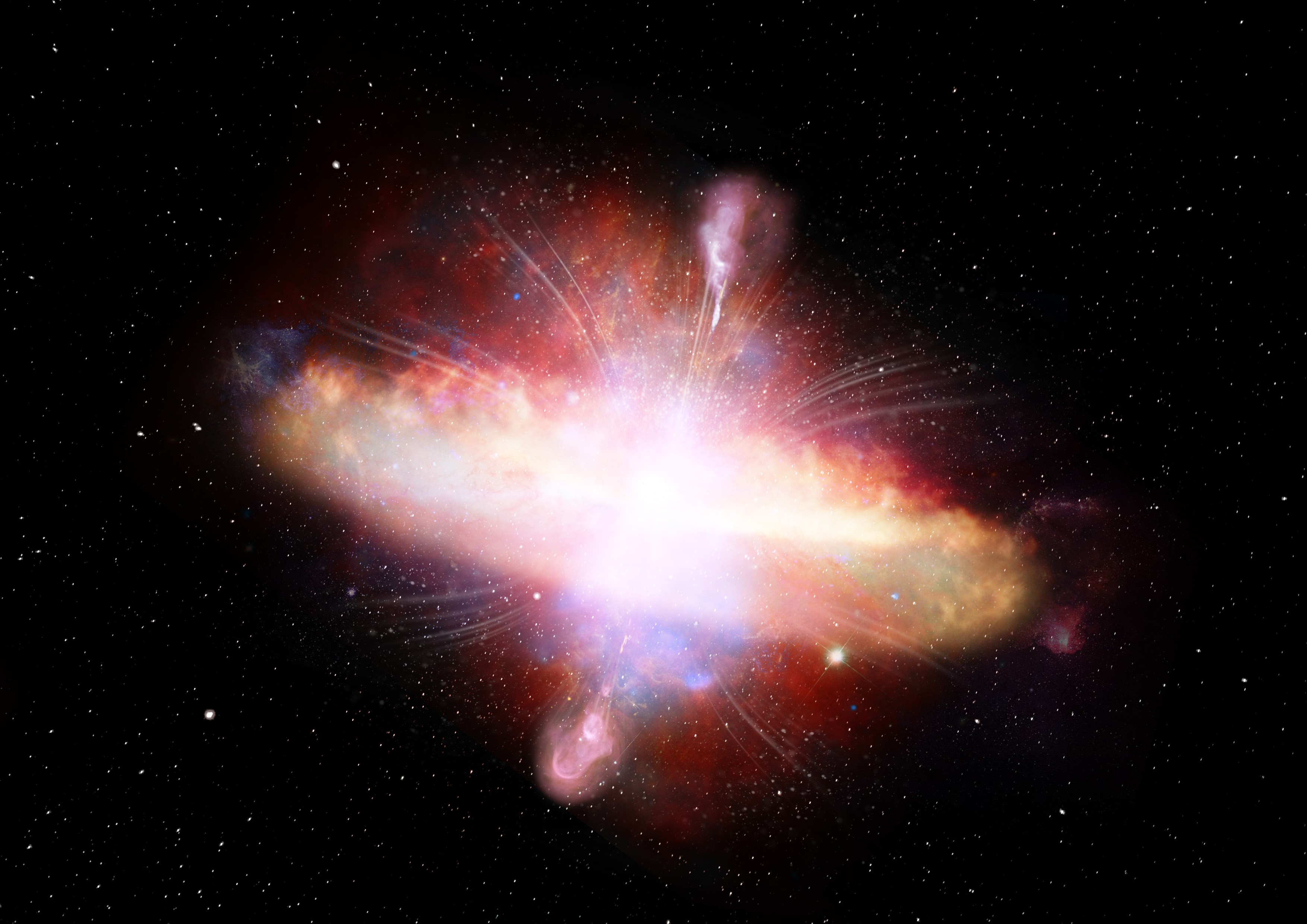Astronomers identify ‘transition phase’ in celestial colour change
Scientists have identified a rare moment in the life of quasars, a new study suggests

Astronomers believe they have shed light on why some of the brightest objects in the sky change colour.
Scientists have identified a rare moment in the life of quasars, which were first observed 60 years ago.
Until now their origins have remained a mystery, but researchers at Durham University have spotted what they say is a “brief transition phase” in their development.
They say the findings could show how quasars and their host galaxies evolve.
A quasar is the extremely bright nucleus of an active galaxy and its powerful glow is created by the incredible amounts of energy released by gas falling toward the supermassive black hole at its centre.
They are thousands of times brighter than galaxies like our Milky Way and the majority are blue in colour.

It has been thought that red quasars are actually blue ones that are angled away from our line-of-sight.
But researchers at Durham University have ruled this model out.
They have shown that red quasars are likely to be the result of a brief, but violent, phase in the evolution of galaxies when the black hole ejects a large amount of energy into the surrounding clouds of dust and gas.
This injection of energy blows away the dust and gas to reveal a blue quasar.
Lead author Lizelke Klindt, a PhD researcher in Durham University’s Centre for Extragalactic Astronomy, said: “How quasars develop has been the cause of significant uncertainty.
“What our results suggest is that quasars undergo a brief transition phase, changing colour from red to blue, when they emerge from the deep shroud of dust and gas surrounding them.
“What we believe we are seeing is a rare but important step in the life of these galactic beasts during galaxy evolution when their black holes are starting to shape their environments.”

They used archival data from the Sloan Digital Sky Survey and the Very Large Array radio astronomy observatory.
Co-author Professor David Alexander, head of astronomy, at Durham University, said: “We expect that during this transition phase the energy from the supermassive black hole will burn off the gas needed to form stars.
“Without the gas the galaxy cannot continue to grow, so what we are possibly seeing is the start of a quasar effectively ending the life of the galaxy by destroying the very thing it needs to survive.”
The next step in the research is to use more in-depth data to understand the finer details of this transition phase.
The research was funded by a Faculty of Science Durham Doctoral Scholarship, the Science and Technology Facilities Council, a European Union Cofund/Durham Junior Research Fellowship and the Swiss National Science Foundation.





